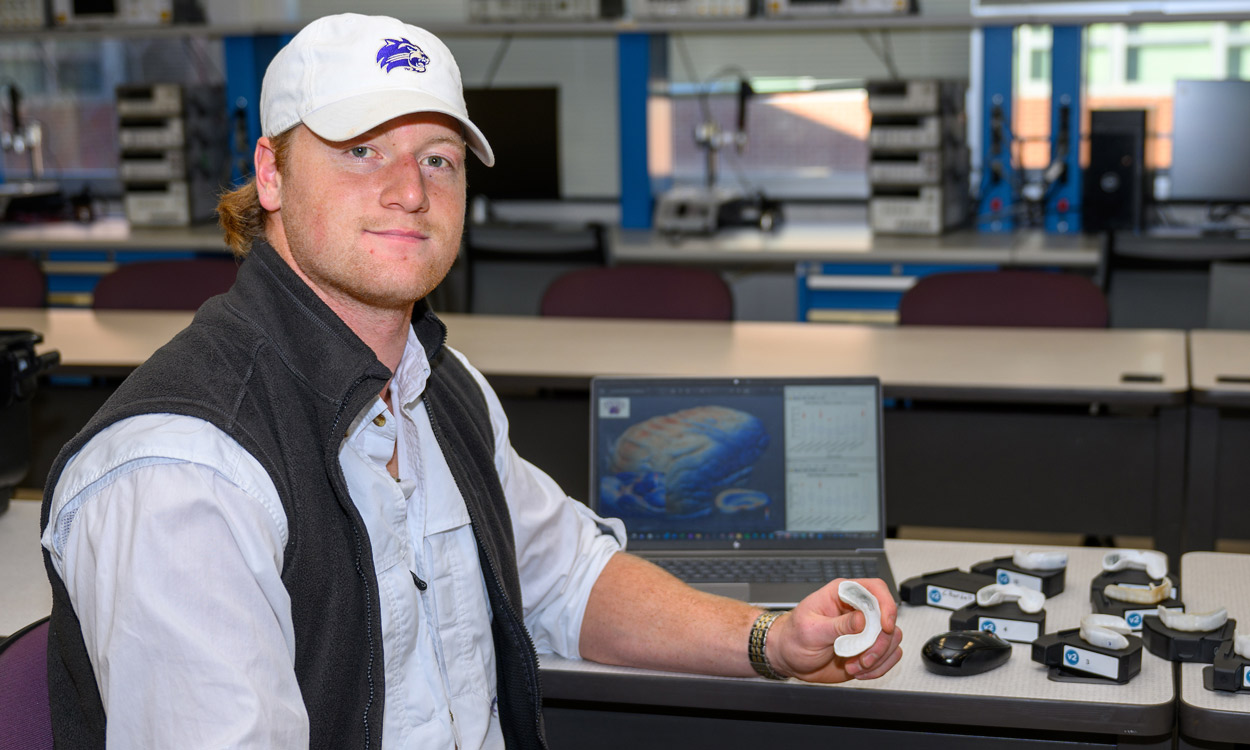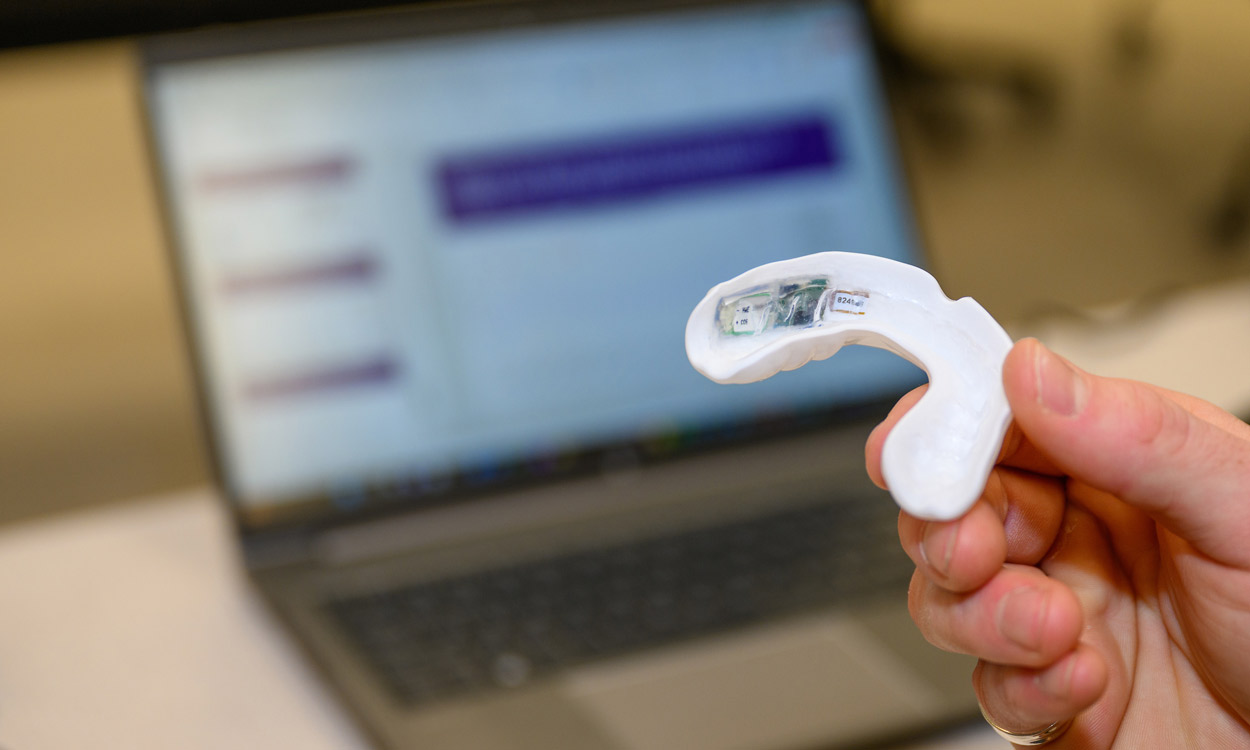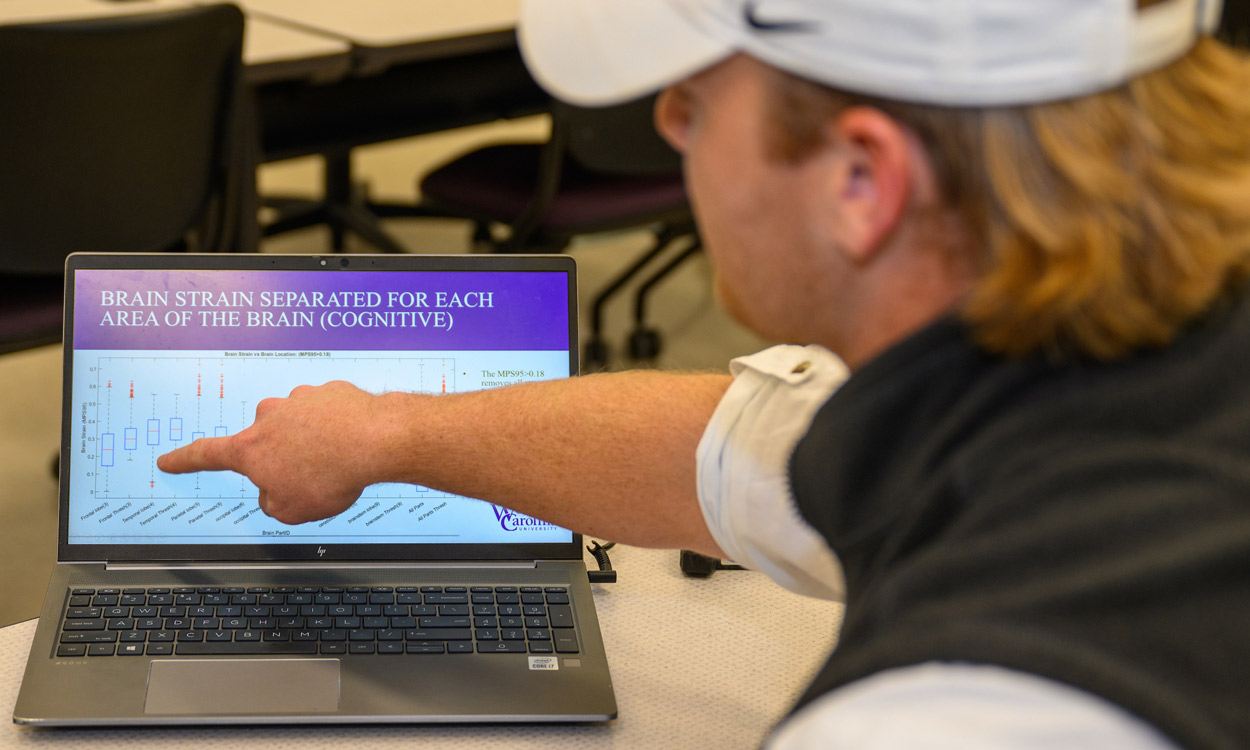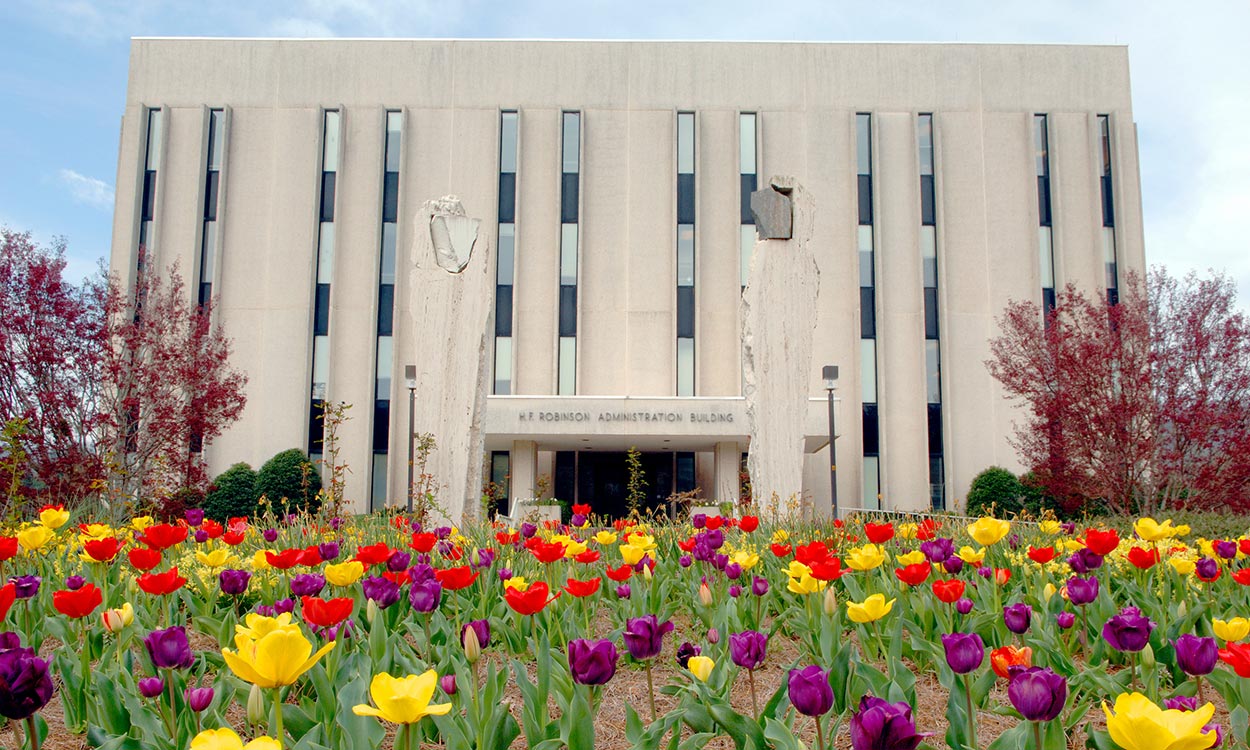Engineering and Athletics team up with Penn State on head impact research

Graduate student Clayton Bardall approached Martin Tanaka, professor in WCU’s College of Engineering and Technology, about a project to use instrumented mouthguards to record head impacts with the hope of making contact sports safer.
By Julia Duvall
Clayton Bardall, a graduate student in Western Carolina University’s Engineering Technology program and tight end for WCU’s football team, recently combined his two passions – football and engineering – on a project that will have a major impact on athletes for generations to come.
In the spring of 2021, Bardall approached Martin Tanaka, professor in WCU’s College of Engineering and Technology, about a project to use instrumented mouthguards to record head impacts with the hope of making contact sports safer.

Clayton Bardall was a tight end on the WCU football team
Understanding these types of head impacts over time is something very important to Cumming, Georgia native Bardall, as he suffered a concussion in the spring of 2021 during practice.
“I began experiencing symptoms and went under the concussion protocol,” Bardall said. “Having firsthand experience, I wanted to get a better understanding of head impacts and what effects they have on the brain, whether it be side, behind or front impact.”
Bardall earned his bachelor’s degree in mechanical engineering from WCU and due to COVID-19 rules was allowed an additional year of eligibility and was able to continue playing football while earning a master’s degree.
“As soon as I stepped on campus, I knew WCU was the right fit for me,” Bardall said. “I broke my ankle my senior year of high school, first football game of the season. I was a redshirt freshman and with the COVID eligibility year, I have been able to not only continue my education but continue playing football.”
As Tanaka was working to bring the project with Bardall together, he attended an engineering conference in Columbus, Ohio, where he sought out his colleague, Reuben Kraft from Penn State, who specializes in injury biomechanics.
“I knew that Reuben was the right person to talk to and since I was going to the ASME national conference, there was a good chance that I would see him there,” Tanaka said.

Engineering professor Martin Tanaka (left) and graduate student Clayton Bardall discuss their mouthguard research at WCU's Scholarship Showcase.
Kraft was very interested in working with Bardall and Tanaka on the research, as Penn State had just received grant funding from the Chuck Noll Foundation for Brain Injury Research.
The project is a collaboration, with WCU collecting head impact data during football games and practices. Penn State researchers use the head movement data and finite element analysis to calculate the strain in each tissue element.
“Brain tissue strain depends upon the direction of impact, existence of twisting movements, the geometry of the brain and material properties of the tissue,” Tanaka said. “The goal of this research is to develop a better understanding of the connection between brain tissue strain caused by head impacts and cognitive function. It is a great collaborative project between WCU’s engineering program, WCU athletics and Penn State.”
Ten mouthguards were custom made for WCU players. Bardall took the impressions himself and the molds were sent off to Prevent Biometrics to create custom mouthguards.

Ten special-equipped mouthguards were worn by football players last season to help collect data.
“(They) wore the custom mouthguards with inertial measurement units during practices and games,” Bardell said. “Each IMU contains a triaxial accelerometer and triaxial gyroscope that measures linear and angular accelerations of the skull.”
The players were tested to establish a cognitive function baseline at the beginning of the study. Following a severe head impact, participants were tested again to see if there was a change in cognitive function. Cognitive performance scores were provided in the following areas – verbal memory, reaction time, visual motor speed, visual memory and impulse control.
“I believe that the data that has been collected will be put to good use,” said Steven Honbarger, director of sports medicine at WCU. “It can be used as another tool to help us understand contacts and collision in the sport and how those impacts can lead to mild traumatic brain injuries and concussions. It will also alert our sports medicine staff to check on those student-athletes that have sustained high force contacts and collision for other trauma that may occur.”
Tanaka met Kyle Pifer, WCU’s deputy athletic director, this fall on a chance meeting in Sylva. He shared with Pifer the project details and praised the support that the project has received from WCU Athletics and sports medicine. Pifer was excited about the project and invited Tanaka to present it to the senior athletic staff.
“Eventually this research will have a much larger reach, including youth, high school, more collegiate and professional sports to compare where these concussions are occurring,” Pifer said. “Getting to do this hands-on research within our own team gives us a better understanding of head impacts so we can better protect our student-athletes.”

While data was specifically recorded for football players in this study, many other sports such as rugby, boxing, hockey, martial arts, rodeo, lacrosse and wrestling have the potential for brain injuries during normal sporting activity and would benefit from this research.
During WCU’s fall 2023 football season, more than 1,500 head impacts were recorded in 10 players. Three of these impacts had an acceleration of more than 30Gs and were considered severe, but none resulted in a diagnosed concussion.
“Even at this level, cognitive impairment was observed with players exhibiting decreased verbal memory, slower reaction time, reduced visual motor speed, decreased visual memory and/or reduced impulse control,” Bardall said.
Now that the football season is over and data is collected, Bardall will spend his time analyzing the data, interpreting the findings and writing his thesis. With help from Tanaka and Kraft, he plans to graduate with his master’s degree in May.
“We are honored to have worked hand-in-hand with Clayton Bardall on this project,” said WCU head football coach Kerwin Bell. “Hopefully, the research gathered will assist in making a positive impact on the future health of student-athletes.”

